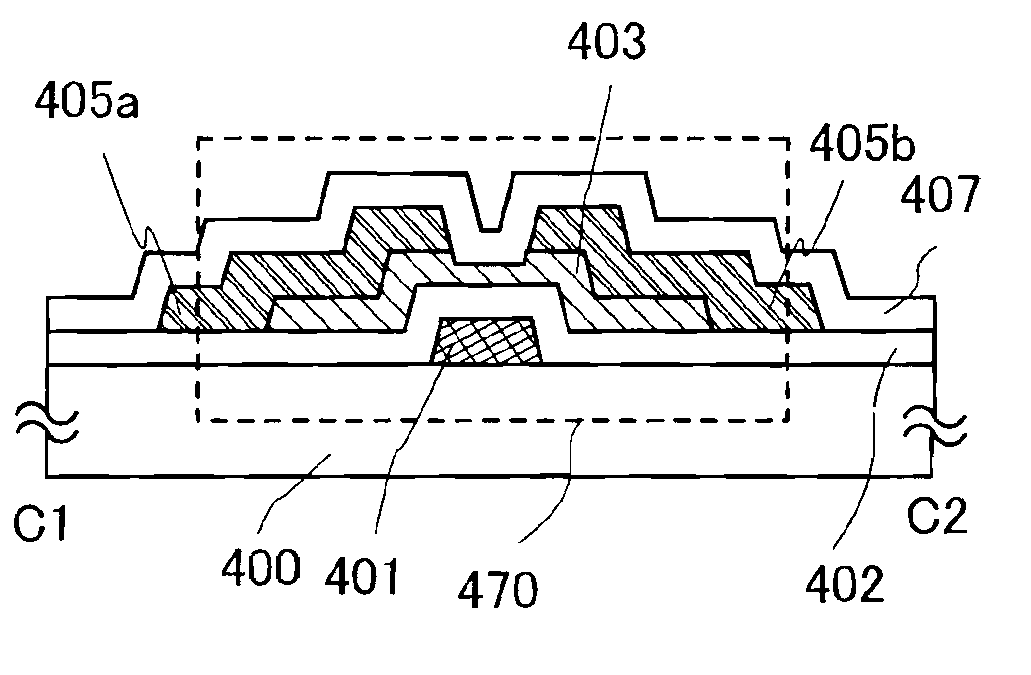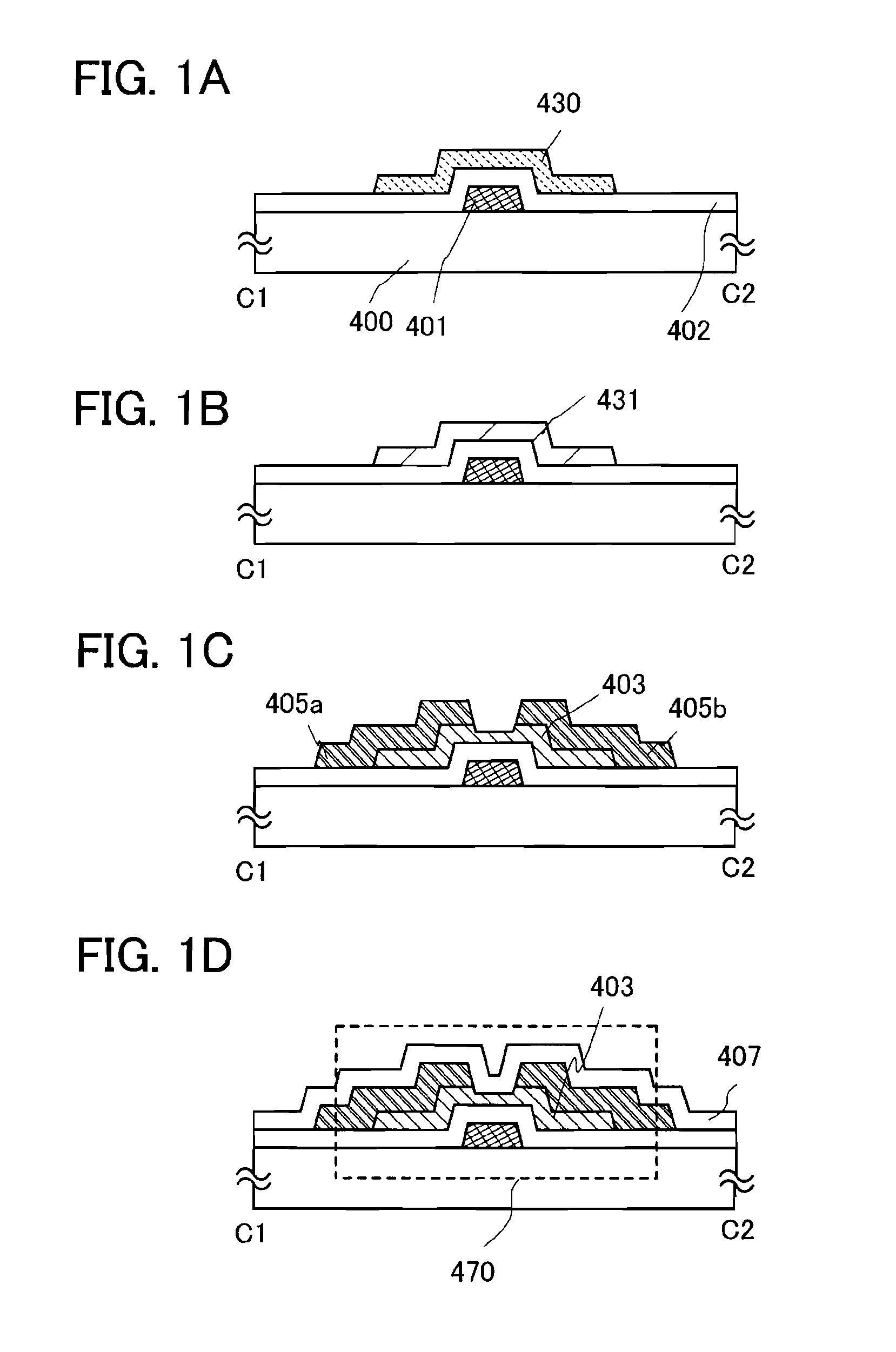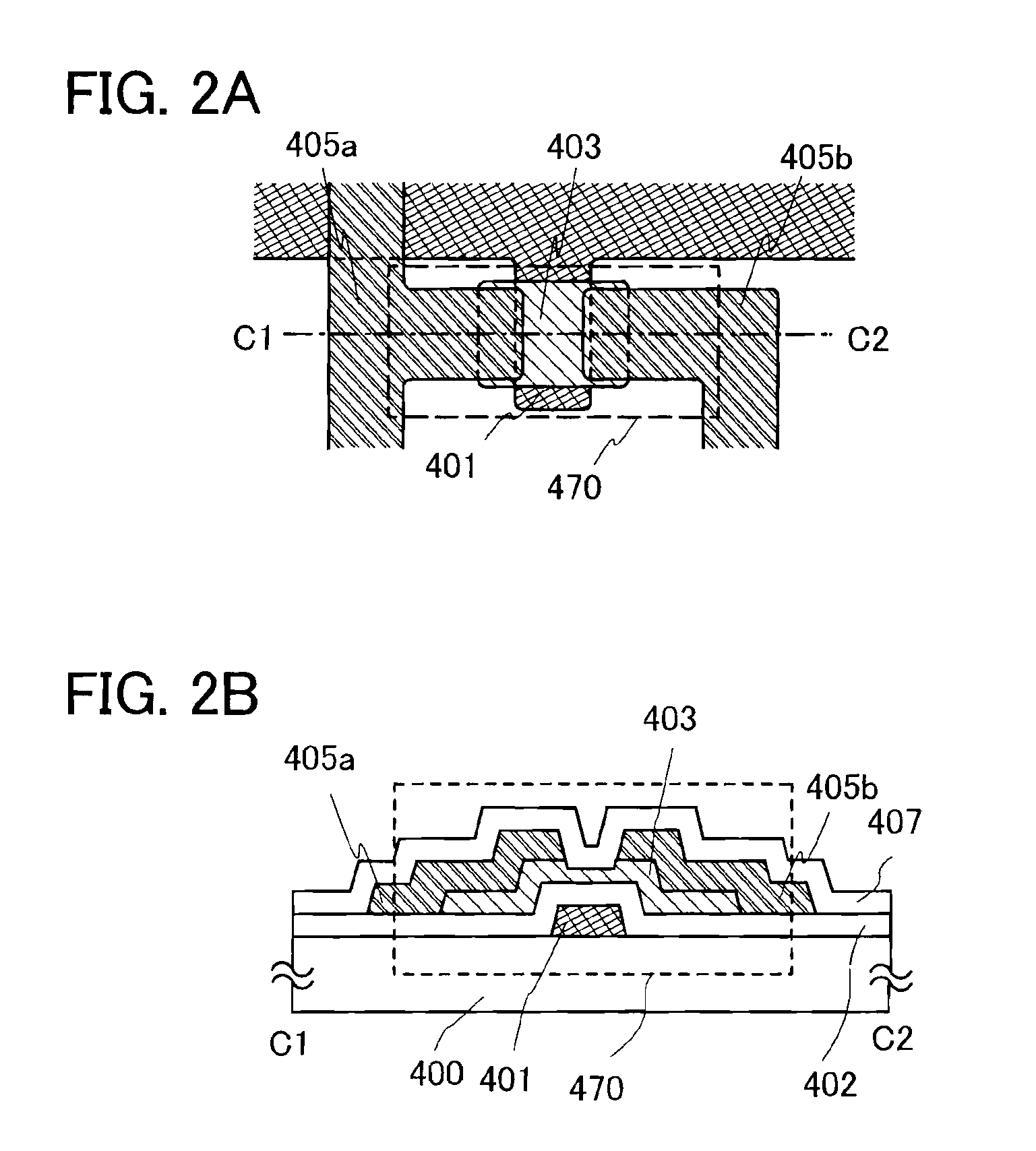Method for manufacturing semiconductor device
a semiconductor layer and manufacturing method technology, applied in the field of methods, can solve problems such as oxidizing the oxide semiconductor layer, and achieve the effects of stable electric characteristics, improved electric characteristics, and high reliability
- Summary
- Abstract
- Description
- Claims
- Application Information
AI Technical Summary
Benefits of technology
Problems solved by technology
Method used
Image
Examples
embodiment 1
[0076]A semiconductor device and a method for manufacturing the semiconductor device will be described with reference to FIGS. 1A to 1D and FIGS. 2A and 2B.
[0077]FIG. 2A is a plan view of a thin film transistor 470 included in a semiconductor device, and FIG. 2B is a cross-sectional diagram along line C1-C2 of FIG. 2A. The thin film transistor 470 is a bottom-gate thin film transistor and includes, over a substrate 400 which is a substrate having an insulating surface, a gate electrode layer 401, a gate insulating layer 402, an oxide semiconductor layer 403, and a source and drain electrode layers 405a and 405b. In addition, an oxide insulating layer 407 is provided to cover the thin film transistor 470 and be in contact with the oxide semiconductor layer 403.
[0078]As for the oxide semiconductor layer 403, heat treatment which reduces impurities such as moisture (heat treatment for dehydration or dehydrogenation) is performed in an oxygen atmosphere at least after the formation of t...
embodiment 2
[0123]A semiconductor device and a method for manufacturing the semiconductor device will be described with reference to FIGS. 4A to 4D and FIGS. 5A and 5B. Embodiment 1 can be applied to the same portion(s), or a portion(s) or a step(s) having the similar function(s) as / to Embodiment 1, and the description thereof is not repeated.
[0124]FIG. 5A is a plan view of a thin film transistor 460 included in a semiconductor device, and FIG. 5B is a cross-sectional diagram along line D1-D2 of FIG. 5A. The thin film transistor 460 is a bottom-gate thin film transistor and includes, over a substrate 450 which is a substrate having an insulating surface, a gate electrode layer 451, a gate insulating layer 452, a source and drain electrode layers 455a and 455b, and an oxide semiconductor layer 453. In addition, an oxide insulating layer 457 is provided to cover the thin film transistor 460 and be in contact with the oxide semiconductor layer 453.
[0125]In the thin film transistor 460, the gate in...
embodiment 3
[0145]A process for manufacturing a semiconductor device including a thin film transistor will be described with reference to FIGS. 6A to 6D, FIGS. 7A to 7C, 8, and 9A1, 9A2, 9B1, and 9B2.
[0146]In FIG. 6A, as a substrate 100 having light-transmitting property, the substrate 100 described in Embodiment 1 can be used as appropriate.
[0147]Next, a conductive layer is formed entirely over a surface of the substrate 100, and then a first photolithography process is performed to form a resist mask. Then, an unnecessary portion is removed by etching, so that wirings and electrodes (a gate wiring including a gate electrode layer 101, a capacitor wiring 108, and a first terminal 121) are formed. At this time, the etching is performed so that at least end portions of the gate electrode layer 101 are tapered.
[0148]The gate wiring including the gate electrode layer 101, the capacitor wiring 108, and the first terminal 121 in a terminal portion each can be formed using a material of the gate elec...
PUM
 Login to View More
Login to View More Abstract
Description
Claims
Application Information
 Login to View More
Login to View More - R&D
- Intellectual Property
- Life Sciences
- Materials
- Tech Scout
- Unparalleled Data Quality
- Higher Quality Content
- 60% Fewer Hallucinations
Browse by: Latest US Patents, China's latest patents, Technical Efficacy Thesaurus, Application Domain, Technology Topic, Popular Technical Reports.
© 2025 PatSnap. All rights reserved.Legal|Privacy policy|Modern Slavery Act Transparency Statement|Sitemap|About US| Contact US: help@patsnap.com



